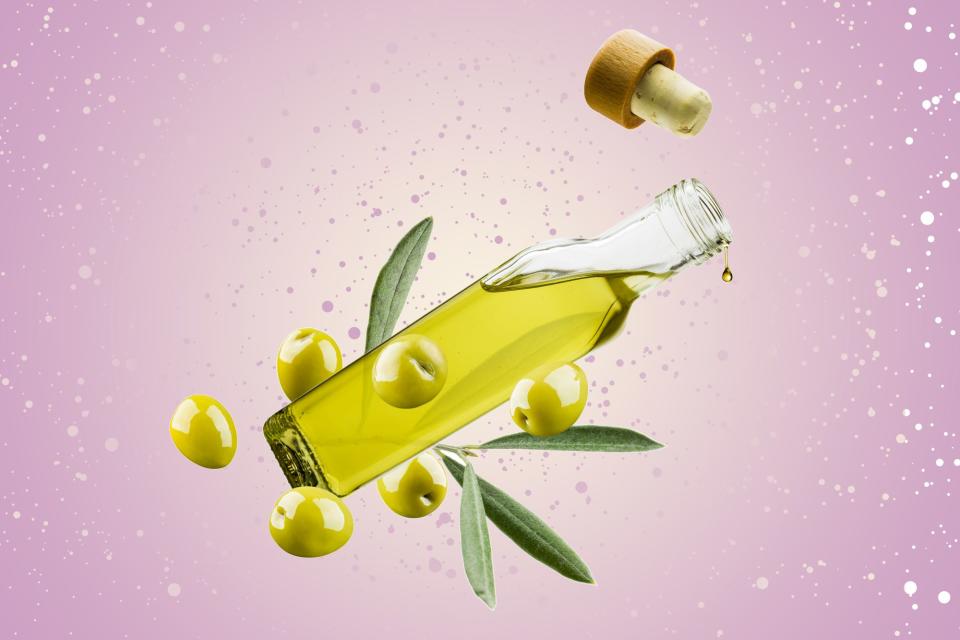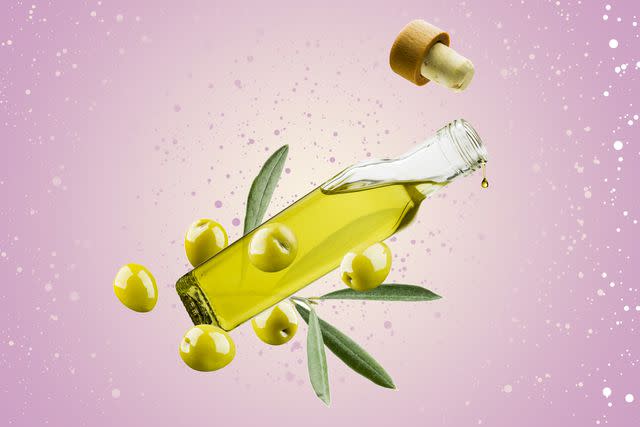How to Choose Olive Oil, According to an Expert
Plus how to host your own olive oil tasting.

Reviewed by Dietitian Emily Lachtrupp, M.S., RD
Peek into your kitchen pantry and you'll likely find a bottle of olive oil. This gold-to-green-hued oil is packed with compounds that support heart health and healthy aging, may protect against certain cancers and more. It's also incredibly versatile, finding itself at home in dips, dressings, cakes and more. But is that olive oil in your pantry a good one? To find out, we asked an expert for tips on buying the best bottle of olive oil. Plus one of those experts, a real-deal olive oil sommelier, shares tips for how to taste olive oil properly.

Wait, There Are Olive Oil Sommeliers?
Indeed there are. Salvatore Bono, co-owner of Bono, the largest producer of olive oil in Sicily, is one himself. He likens the distinction to that of a wine sommelier—a highly trained individual who evaluates and selects high-quality olive oils. They are also able to identify the variety and region of origin by tasting. To become an olive oil sommelier, one must undergo rigorous training and education to learn the factors that influence the taste, aroma and quality of olive oil. Candidates then taste and identify different qualities and varieties of olive oil, sight unseen, to earn their certification. Annual classes and tastings help sommeliers maintain their skills.
How to Plan Your Own Olive Oil Tasting
Want to taste olive oil like an olive oil sommelier? Follow Bono's recommendations for an epic tasting.
Choose Your Bottles
Bono recommends looking for bottles that have certifications like Protected Designation of Origin (PDO) or Protected Geographic Indication (PGI), which ensures quality. Alternatively, look for oils that are entirely from one country (100% Spanish, for instance) which will allow you to really differentiate the flavor profiles from one country to another. Look for a harvest date on the bottle—olive oil starts to degrade within a year of the olives' harvest, so choose one that's been harvested within the last year. Also, look for oils sold in tinted bottles that protect them from light, which can cause the oil inside to degrade more quickly.
For your tasting, you'll want to choose a theme, which can be broad or narrow. You could choose bottles that come from a single country, like Italy or Greece. Or maybe the goal is to test a variety of oils from different countries. In either scenario, Bono suggests choosing at least three bottles so that you can compare the similarities and differences among nations or even regions within one country.
Set Up the Tasting
Here's how Bono recommends setting up an olive oil tasting:
You'll want one wineglass per olive oil per person (so if you're tasting three oils, you'll want three glasses per person). If you want to taste like a real olive oil sommelier, use blue-tinted glasses. Bono says that helps the mind to ignore the color of the oil, since color doesn't impact flavor or quality.
Add a glass of water, paper and a pen to each setting and set out a platter of sliced Granny Smith apples to cleanse the palate.
Remove anything with a strong odor from the room, including food, and suggest guests refrain from wearing strong perfume or cologne, as these could interfere with one's senses during the tasting.
5 Steps for Properly Tasting Olive Oil
Now it's time to taste! If you're wondering about the apple slices, here's why it's recommended: While at wine tastings, water is the typical palate cleanser, but oil is not water soluble. A bite of tart green apple (like Granny Smith) followed by a sip of water works better between tastes. Here's Bono's advice for proper olive oil tasting:
Place one hand over the top of the glass and gently swirl the oil to release its aromas.
Uncover the glass and inhale, making note of the different aromas.
Taste the oil by "slurping" a small amount into your mouth while also taking in a bit of air at the same time. Mixing the oil with the air helps to distribute it all over your tongue and the roof of your mouth, so you can sense more of its aromas and flavors. While the oil is on your palate, notice any additional aromas you get through the back of the nostrils (this is something we do naturally while we are eating, but for tastings like these it can take some practice).
Swallow the oil—or use a spit cup if you prefer.
Take a bite of apple followed by a sip of water and then move on to your next oil.
Bottom Line
All olive oils are not the same, that's why tasting them is a great idea. Channel your inner olive oil sommelier, grab your wineglasses, and get swirling, sniffing and slurping. Invite friends and make it a party. Then have fun creating delicious food using your new favorite varieties.

